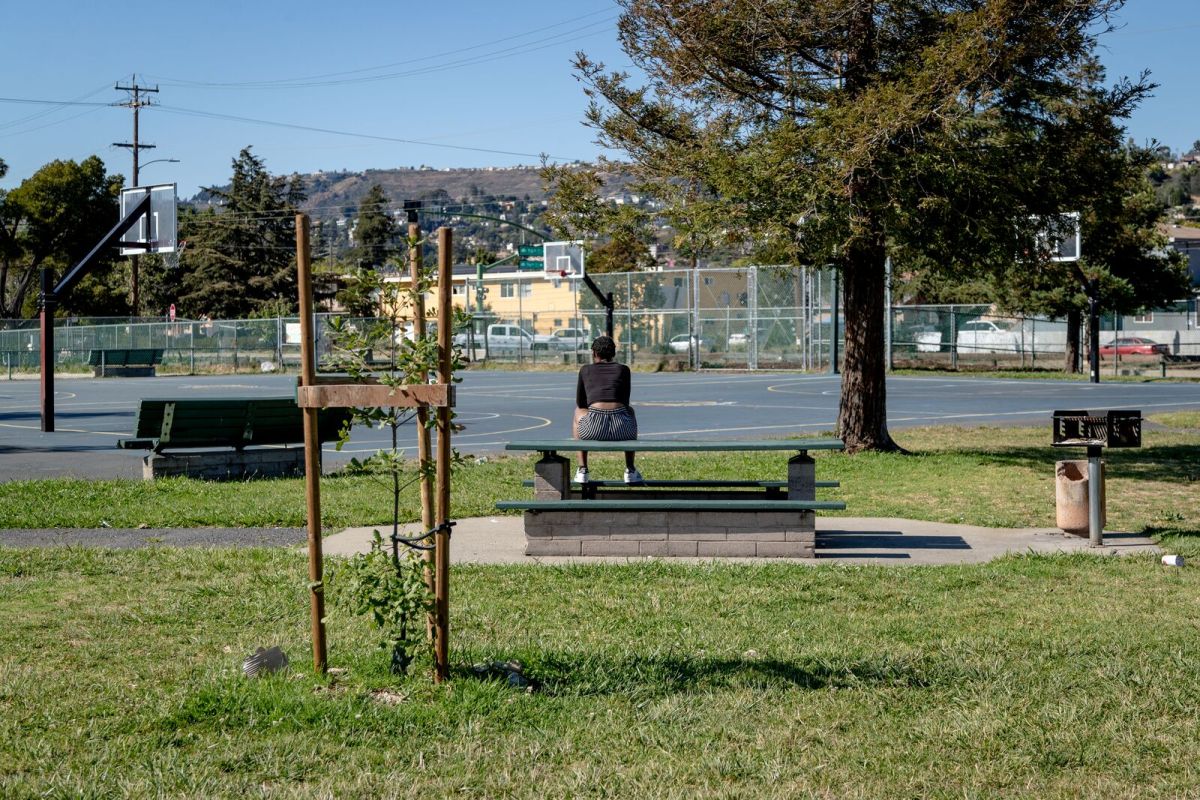In any densely populated city, a brief reprieve to the outdoors can be the literal breath of fresh air you need. A survey conducted by the Trust for Public Land found that 89% of people in Oakland can find that respite just a 10-minute walk from their homes.
Unfortunately, the residents who make up the other 11% are those who have historically lacked equitable access to resources: lower-income communities of color.
Since 2011, The Trust for Public Land, a national nonprofit focused on expanding access to parks and green spaces, has been working with the U.S.’s 100 most populated cities to rank their parks based on five metrics: their acreage range, the funding they received, their amenities, their accessibility, and their equity. In terms of “equity,” the ranking focuses on the distribution of parks within a community based on a neighborhood’s racial makeup and income level.
Over the years, the ranking system has become a well-known metric for the health and equity of a city’s park system, with cities across the U.S. celebrating their successes when they are able to move up in their rankings.
Out of 100 cities, Oakland has ranked 52nd overall in the annual ParkScore this year. In the five key areas the Trust for Public Land examines, Oakland received its highest score in access to parks and its lowest in investment. Oakland also ranked in the middle range on park amenities, acreage and equity.
The report found that Oakland spends an average of $109 per resident on parks. In comparison, San Francisco, which ranked 7th in this year’s scores, spends an average of $546 per resident.
While this is a stark difference, Fred Kelley, the director of the Oakland Department of Parks, Recreation and Youth Development, said he feels their investment score is inaccurate. Kelley said that additional funding for Oakland’s parks comes from the Oakland Public Works Department, which was not included in the ParkScore.
“Oakland Public Works is responsible for maintaining OPRYD’s assets,” said Kelley. “Those funds are separate.”
The information that the Trust for Public Land uses to calculate the scores is self-reported by the cities. Both the Trust for Public Land and Kelley recognize that reporting issues may contribute to Oakland receiving a lower score.
“Oakland is running into really funding and organizational capacity issues, and that has to do with the reporting itself,” said Šárka Volejníková, The Bay Area Parks for People Director with Trust for Public Land.
Volejníková said that, in her opinion, Oakland’s scores are representative of the overall state of its parks systems, but she feels that officials are working hard to address gaps with the resources available to them.
“Their efforts are valiant, but the funding only goes so far,” said Volejníková.
The parks department cites funding as a significant barrier to its work and is working to find alternative sources of funding for its upcoming plans. Kelley also emphasized that the ParkScore is important to the city as a measure of how well it achieves its internal goals and that it will work with the trust this upcoming year to ensure its reporting is accurate.
“I think the scores provide us with a unique opportunity to sort of take an internal gut check to see where we are,” said Kelley. “Because there’s a correlation between the scores and what we’re actually doing out there in the real world.”
Equity in Oakland’s Parks
Oakland scored the highest in access to parks, with 89% of Oakland residents being able to walk to a park 10 minutes—around a half mile—from their home. According to the Trust for Public Land, this is a key metric of an accessible park system, as it is the average distance most people are willing to walk to reach a destination.
While Oakland scored high in this category, it scored lower on equity. The report found that “in Oakland, residents living in neighborhoods of color have access to 66% less nearby park space than those living in white neighborhoods” and “residents living in lower-income neighborhoods have access to 78% less nearby park space than those in higher-income neighborhoods.”
The ParkScores are designed, in part, to raise awareness and spark conversations about the need for adequate green spaces across the country. In Oakland, many of those conversations have been taking place. The Oakland Parks, Recreation, and Youth Development Department says it is working to boost its park system while addressing historic inequities across the city.
“We’re making up for equitable allocation of resources for the past, but we have a little bit of catching up to do,” said Kelley. “It’s not an overnight process, but slowly but surely, we have to chip away at that reality.”
The parks department has been partnering with organizations across the Bay Area, including Trust for Public Land, the Oakland Ballers, and the Eat. Learn. Play. Foundation, among others, to improve access to green spaces and youth programming across the city from East Oakland’s Verdese Carter Park to Raimondi Park in West Oakland.
The city of Oakland, the Trust for Public Land, and the Oakland Unified School District, have also been partnering for several years to convert blacktop schoolyards to green schoolyards.
Kelley noted that the city of Oakland is currently seeking funding for a parks master plan, which he said they “sorely need,” as well as a departmental strategic plan. With these plans, Kelley believes they will be able to make a thriving parks system for all Oakland residents.
“What you see now, what we provide, will look totally different in the future. We want to be bigger, better, shinier,” said Kelley. “Not just to do it so we can pat ourselves on the park and say ‘aren’t we great’ but because the community deserves it…especially those marginalized communities that have been neglected for years.”
Correction: A previous version of the article incorrectly stated the percentage of Oakland residents that do not live within a 10 minute walk of a park.

